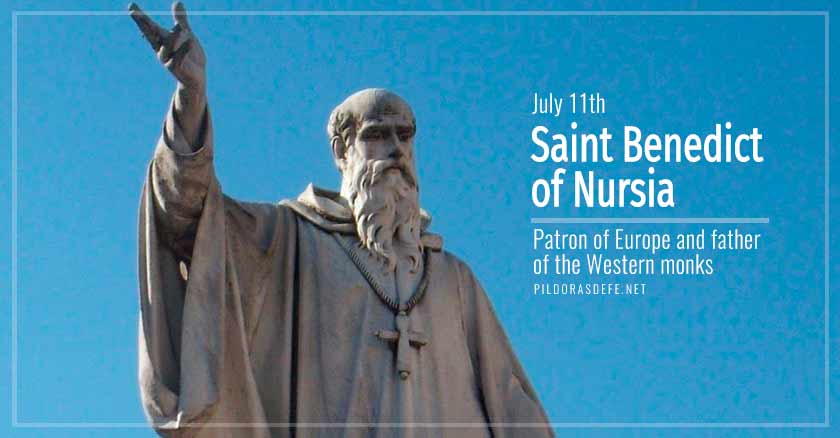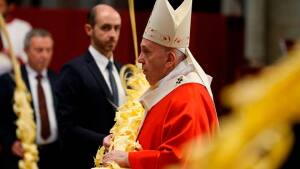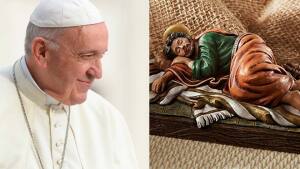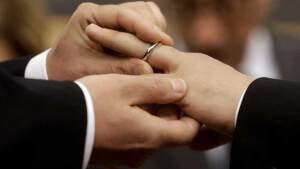St. Benedict of Nursia predicted the day of his death. Known for his powerful Medal and Cross, he wrote the famous Rule of St. Benedict
Saint Benedict of Nursia. Patron of Europe and father of the Western monks.
St. Benedict of Nursia, Abbot, was a humble Christian saint who is venerated, not only in the Catholic Church, but also in the Orthodox Churches, the Eastern Orthodox Churches, the Anglican Communion and the Old Catholic Churches. St. Benedict is the patron saint of Europe. He founded twelve communities for the monks of Subiaco in Lazio, Italy, before moving to Monte Cassino. His main achievement was his rule, called the "Rule of St. Benedict", which contains precepts for his monks, becoming one of the most influential religious rules in Western Christianity. He is considered the father or patriarch of the western monks.
Celebration: July 11th.
Roman Martyrology: Memory of St. Benedict, abbot, patron of all Europe, who was born in Nursia, in the region of Umbria and was educated in Rome, began to lead a hermit´s life in the region of Subiaco, gathering around him many disciples; after a time he went to Cassino, where he founded the famous monastery and wrote a rule, which was extended and earned him the meritorious title of Patriarch of the Western monks. According to tradition, he died on March 21st.
Biography of Saint Benedict.
St. Benedict was born around 480, in the district of Nursia, in Umbria, Central Italy. He is considered the "patriarch of Western monasticism" and is "co-patron of Europe", together with Saints Cyril and Methodius.
When he was young, St. Benedict was sent to Rome to carry out his studies, but he left after a short stay, with the desire to dedicate his life to God.
He went to live in an isolated place near Subiaco, near the ruins of the Emperor Nero´s villa, about fifty miles from Rome. [Today the cave is the famous sanctuary called "Sacro Speco" (The Holy Cave) and is one of the most beautiful sanctuaries in Europe].
In Subiaco, St. Benedict lived a life of solitude and prayer for about three years with the support of a monk named Romano. His time as a hermit was briefly interrupted when he became the superior of a group of rebellious monks who, being unhappy with their new guide, tried to poison him. After this event, he withdrew to the cave of Subiaco, once again.
In time, the holiness of St. Benedict attracted a large number of disciples and after a while, twelve small monasteries were established around Subiaco, with Benedict as their spiritual father.
Around the year 530, St. Benedict left Subiaco with some of his disciples and went to the region of Monte Cassino, where he started a single community, united at the top of the mountain. He remained there until the day of his death in 547.
St. Benedict and the announcement of his death.
On one occasion, St. Benedict had predicted, among many other things, the imminent date of his death. He notified his disciples that his hour had come and, six days before his end, he asked them to dig a grave. As soon as the digging was completed, St. Benedict was attacked by a terrible fever. On March 21, 543, during the ceremonies of Holy Thursday, Benedict received the Eucharist.
Then, with his monks, St. Benedict murmured a few words of prayer and died standing in the chapel, with his hands raised to heaven. His last words were:
"One must have an immense desire to go to heaven"
St. Benedict was buried next to St. Scholastica, his sister, who had been a consecrated person to God since her youth and died shortly before him.
Both were buried at Monte Cassino in the oratory dedicated to St. John the Baptist, where once stood the altar of Apollo, which he himself had had destroyed. Two monks were far away from there praying, and suddenly they saw a radiant light that went up to the sky, it was the moment when the saint died, and then they exclaimed:
"Surely it is our Father Benedict, who has flown off to eternity."
The feast day of St. Scholastica is February 10 and St. Benedict´s is March 21 and July 11. The date of March is generally considered to be the date of her death.
The Rule of St. Benedict.
Inspired by the Holy Spirit, St. Benedict wrote a rule for monks that he called "The Holy Rule" and has been an inspiration for the rules of many monastic religious communities.
The Rule of St. Benedict teaches the art of living that needs a sense of belonging and stability to experience a sense of place in the world. Many lay people also commit themselves to live the essentials of this rule, adapted to the conditions of the lay vocation. You can read below the whole Rule of St. Benedict
The Rule of St. Benedict is summarized in the phrase "Ora et labora" (pray and work), that is, the life of the monk to be one of contemplation and action, as taught in the Gospel. The monastic ideal of the Rule of St. Benedict provides great wisdom for a much happier human life as well as a noble religious ideal.
St. Benedict wants to remind us through his Rule that we find our inner peace in God who is at the heart of everything. We must place our hope in God alone. We count on prayer to help us find that peace in our hearts and overcome all that we do to destroy it. It is God who helps us to be carriers of peace for the others, to make peace where there is division and antagonism.
St. Benedict´s recommendations.
- First of all what you need as a religious foundation (after charity) is humility.
- The house of God is for prayer and not for talking.
- Above all you should strive to be educated as a good father.
- The treasurer or money manager should not humiliate anyone.
- Everyone should strive to be exquisite and pleasant in his dealings.
- Every community should be like a good family where everyone loves each other
- Everyone must avoid everything that is vulgar. Remember what Ambrose said: "To behave nobly is a great virtue"
- The true monk should not be "proud, violent, gluttonous, sleepy, lazy, gossiping, or denigrating ... but rather chaste, meek, humble, jealous, obedient".
Today, the "Rule of St. Benedict", as it is commonly called, is considered to be one of the most important factors in the development of Christian Europe. In time, the rule became the norm for all monks and nuns in the West.
Among the titles given to St. Benedict over the centuries are the following: "Messenger of Peace, Architect of Unity, Professor of Culture and Civilisation, Father of Western Monasticism, Herald of the Christian Faith, and Father of all Europe"
Today, the disciples of St. Benedict, both men and women, can be found on every inhabited continent of the world, leading lives dedicated to "Prayer and Work," as the holy father Benedict teaches in his government and by his life.
The Medal of St. Benedict.
It is not clear when the first medal was made in honor of St. Benedict, however some documents date its existence to the year 1600. The earliest forms of the medal include an image of St. Benedict with a cross and an image representing the Rule of St. Benedict on the back.
The initials of the prayer of exorcism were also widely used. The medal was approved for general use by the faithful by Pope Benedict XIV in 1741.
The year 1880 marked the 1400th birthday celebration of St. Benedict. To commemorate this momentous anniversary, the Benedictine monks of Monte Cassino were given permission to make a new medal in honor of St. Benedict.
The new St. Benedict´s medal was called "The Jubilee Medal" and the Pope gave this special Jubilee indulgence.
Prayer to St. Benedict for protection from dangers.
O glorious St. Benedict, sublime model of all virtues, pure vessel of God´s grace. Behold, I humbly go in supplication, imploring your heart full of love, to pray for me before the throne of God. In you I find the resources in all the dangers that surround me daily. Protect me against my enemies, inspire me to imitate you in all the virtues. May your blessing be with me always, so that I may flee from all that is not pleasing to God and thus avoid all occasions of sin. Through Jesus Christ our Lord. Amen.
More resources about St. Benedict.
-
Exorcism and Blessing of the Cross and Medal of St. Benedict
Whoever wears and prays with devotion the cross and medal of St. Benedict expects a powerful protection. Exorcism and blessing of medal
-
The meaning of the Cross and Medal of Saint Benedict
The power of the cross and the medal of St. Benedict lies in Christ. Know the powerful meaning of this sacramental medal
-
Prayer to St. Benedict against the influence of evil and the dangers
The prayer to St. Benedict is known to ward off the influence of evil and dangers. Pray the prayer with faith and protect yourself from evil
-
Prayer to St. Benedict of Nursia for inner peace
Peace is something very valuable in everyone´s life. Pray the prayer to Saint Benedict for inner peace and let nothing disturb you
Another Daily Saints.
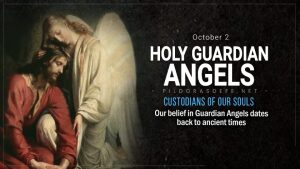
Holy Guardian Angels (Feast) Guardian Angels. Messengers of God
Feast of the Holy Guardian Angels or Guardian Angels, they are God´s messengers. They take care of us on Earth and guide us to Heaven. Custodians of Our Souls
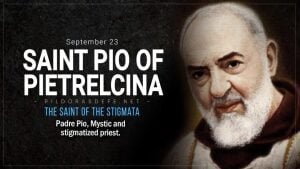
St. Pio of Pietrelcina. Mystic and stigmatized priest.
Padre Pio received the Stigmata and wore them for 50 years. St. Pio of Pietrelcina dedicated himself to Spiritual Direction and Confession. Biography
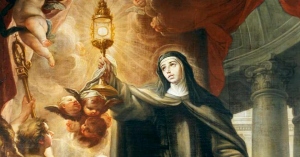
Saint Clare of Assisi. Disciple of St. Francis. Founder of the Poor Clares
St. Clare of Assisi was the founder of the Poor Clares. Her life was rich in works of charity. She was a disciple of St. Francis of Assisi
 Venezuelan, faithful husband and father of a family. Electronic engineer and missionary of the faith. Committed to the proclamation of the Gospel. Solid believer that there are always new beginnings. Whoever has God has nothing to stop him.
Venezuelan, faithful husband and father of a family. Electronic engineer and missionary of the faith. Committed to the proclamation of the Gospel. Solid believer that there are always new beginnings. Whoever has God has nothing to stop him.